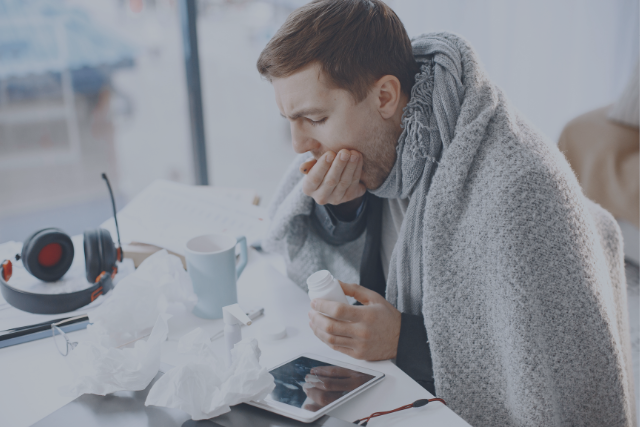How Breathing Mold at Home Can Quietly Affect Your Health
When we talk about indoor air quality, few people realize how much mold exposure can go unnoticed. Breathing mold at home doesn’t always cause immediate symptoms, but over time, it can silently impact your respiratory system, immune defenses, and energy levels. Many families live for months—sometimes years—feeling unwell without realizing that the root of the problem is not the flu or allergies, but the air they breathe every day.
I’ve seen many cases where entire families felt unwell without a clear medical reason. Allergies, coughing, nasal congestion, headaches. The problem wasn’t the weather or dust—it was hidden mold in their home.
What symptoms can mold cause in the body?
When you’re exposed to mold every day, your body can react in different ways. Some symptoms are immediate, while others are more subtle. Here are the most common ones I see in my clients:
- Nasal congestion or constant runny nose
- Frequent sneezing or throat irritation
- Itchy eyes, skin, or nose
- Dry or phlegmy cough without a clear cause
- Persistent headaches
- Fatigue, low energy
- Trouble sleeping
For people with asthma, allergies, or weakened immune systems, the effects can be much more severe: breathing difficulties, infections, asthma attacks, even fever.
Where does the mold you’re breathing hide?
The problem with mold is that it’s often not where you expect it. As a professional inspector, I’ve found mold colonies in places most people never check:
- Behind walls or furniture
- Inside A/C units or ventilation ducts
- Beneath laminate flooring or carpets
- In ceilings with old leaks
- In closets or enclosed spaces with poor ventilation
And while that mold is there, it’s quietly releasing spores into the air. You’re breathing them in. Everyone in the house is.
How do you know if mold is causing your symptoms?
Many mold-related symptoms can be mistaken for a cold, seasonal allergies, or even work fatigue. But if you notice that you feel worse at home—or in a specific room—and better when you leave, that’s a major red flag.
I always tell my clients: If your body isn’t getting better and your doctor has ruled out other causes, it’s time to look at your environment. Because your body responds to the air you breathe. And if that air is contaminated with mold, your health will feel it.
What should you do if you suspect you’re breathing mold?
The only way to know for sure is to get a professional mold assessment. It’s not just about looking for visible spots. It’s a technical process that includes:
- Moisture and air quality measurements
- Inspection using professional tools (like thermal cameras)
- Air or surface sampling (if needed)
- A report with clear results and actionable recommendations
The goal isn’t just to find mold—it’s to understand where it’s coming from, how it’s affecting your health, and how to remove it safely and for good.
Your body is speaking. Are you listening?
Breathing mold every day can have a cumulative effect on your health and your family’s well-being. If you’ve been feeling off and can’t figure out why, don’t ignore it.
A timely inspection can change your health, your quality of life, and even your mood.
Don’t wait for the symptoms to get worse.Mold doesn’t stop on its own. But you can take action today.
If you suspect that indoor mold could be affecting your health, don’t wait for symptoms to worsen. A professional mold inspection in Florida can identify hidden problems before they escalate. For more information about how mold grows, check our article on how to detect mold at home or explore the early warning signs property managers should know. You can also learn more about the health effects of mycotoxins through this CDC resource on mold and health.



